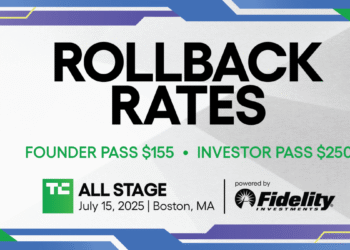
The stories that standout in one reporter’s inbox.
Amanda Coffee is CEO of Coffee Communications and ex-Under Armour, PayPal and eBay.
After years at outlets such as Fast Company, Inc. and CNN, Talib Visram now freelances across top publications — chasing stories where business meets social impact, policy, and cultural change.
This summer, he added a passion project to the mix: America’s Cup, a Substack exploring the politics, economics, and social undercurrents of the 2026 World Cup in North America. We spoke about what makes a pitch stand out, when brands should weigh in on cultural moments, and why a tweet from Cher once led to an unexpected election story.
- You started your career at major outlets before going freelance. Now you contribute business stories to several top publications. What kinds of business stories are you most drawn to?
I’m still drawn to business stories with social or environmental impact, or ones that intersect in some way with the politics and policy of the moment. That said, my beat isn’t as rigid now that I’m freelancing, so I’m happy to hear about stories that may not fit that mold as long as businesses are offering something truly new or innovative. Even then, it may not make it as a standalone story, but could fit into a wider trend piece.
- This summer you launched the Substack “America’s Cup” focused on the lead-up to the 2026 World Cup in North America in 2026 and how it intersects with the political, cultural and social moment we’re in right now. What inspired you to start your Substack, and what kinds of stories are you aiming to share there?
I think I had Substack FOMO? But really, I felt that the topic bridged my experience — covering business and policy for the past few years — with a strong and nostalgic interest of mine, the World Cup. The fact that it’s coming to America at this moment in time is just so complicated, and I felt I was someone who could dissect some of the *many* issues at play, from immigration, to climate, to economics. Now, the bigger sports publications like The Athletic are doing great stuff in this area, and it’s certainly hard to compete with my one-man team, but it’s growing. At some point I may pitch it a series or column at a publication, but for now I wanted to own it.
- What makes a pitch from a brand or publicist stand out in your inbox?
Format is important just because I get so many emails and often have to skim them quickly. I hate to say it as someone who wants to preserve longform writing, but for emails a structure that is clear and readable is important — things like bolding and bullets help! It’s also obvious when a pitch is tailored to me and not generic.
- What’s the biggest mistake PR people make when reaching out to you?
When a story doesn’t have enough of a hook; pitching an investment round, for example, is simply not enough to warrant a story, especially as a freelancer. Another gripe is receiving pitches for the same story I’ve just done. After doing a Men’s Health feature about probiotics, I still get endless pitches about gut health. Not that I wouldn’t do another story on the subject, but I’m unlikely to write a super similar piece again. Though in fairness I suppose that’s better than not paying any attention to what I cover — and I’ll admit with my looser beat now that is harder to determine!
- What can comms folks do better when pitching stories tied to social impact or systemic issues?
Strong hooks and timeliness should be prerequisites. And for impact, steering clear of greenwashing is crucial. I’m increasingly skeptical of companies just talking and not doing. Initiatives like tree planting and carbon credits can be fine but they have their limitations, and I’m unlikely to keep repetitively covering them.
- In your opinion, when is it appropriate for a brand to comment on a cultural moment — and when should they stay quiet?
I think it’s always appropriate for brands to be outspoken — when they mean it. Too often, brands suddenly pivot in a political moment when they think it’s conducive to revenue. The recent Sydney Sweeney/American Eagle controversy is a perfect example of a previously diverse brand trying to conform to a new political norm. If a company really feels a certain way, they should own it. I wrote a print story for Fast Company a few years ago about Dick’s Sporting Goods, which bravely took a stand for gun violence prevention and public land preservation.
- You’ve covered a wide range of topics across business — what’s been the most unexpected story you’ve pursued, and what did it teach you?
I can talk about the most unexpected way I’ve found a story. I saw a tweet by Cher during the unprecedented pandemic election in 2020, where she asked if there was a way she could volunteer with mail ballots. That led me down a rabbit hole and I found the only volunteer-run post office in America, managed by senior citizens in a small town in California. It was a charming little story about their operation, but which addressed serious points around the election and COVID.
- What’s a story that generated a lot of conversation online? Why do you think it sparked a debate?
Sometimes it’s the quick-turnaround stories that unexpectedly gain a lot of traction. I wrote an explainer on the “K-shaped recovery” during the pandemic, and a couple weeks later Joe Biden mentioned the concept at the presidential debate. I’m not saying he cited my story specifically, but it was barely known about beforehand, and traffic skyrocketed on the story. Really, anything remotely political will generate a lot of comments online—and not always nice. I’m thinking particularly of a story I did for TIME about the tariffs on Canada.
- You’ve written for both UK and US outlets — how do you adapt your voice or story angles across audiences?
Adapting between US and UK audiences isn’t too tough (as long as I remember to spell differently now that I’ve adapted to American spelling… shame). Adapting from publication to publication is harder. You get used to writing in a certain way on staff, and then other outlets may want you to use your voice more, or restrain it. But the voicier stories are a treat; you can relax and have fun with it. You learn to adapt, like an editorial chameleon.
The post From policy to pop culture: The business stories this freelancer wants now appeared first on PR Daily.













